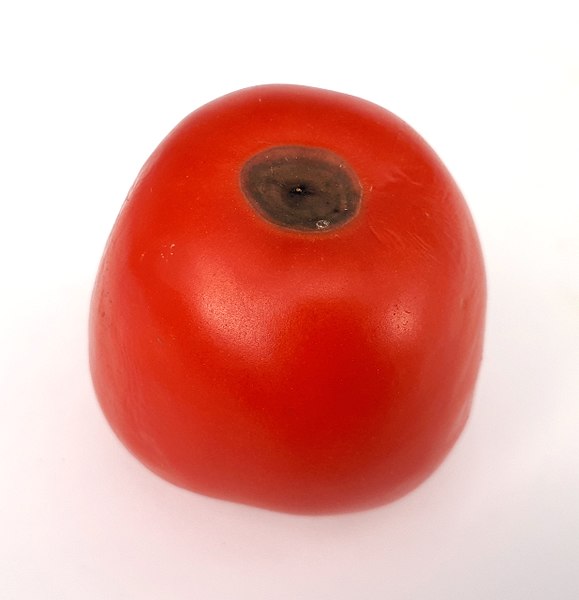
Caused by a lack of calcium uptake from the soil, blossom end rot can affect peppers as well as tomatoes. It appears as a water-soaked spot on the blossom end of the fruit and gradually darkens and enlarges to affect half or more of the fruit. Fungi may invade the dark area causing further damage. Blossom end rot usually appears on the first tomatoes of the season when growth is vigorous and demand for calcium is high throughout the plant but can occur whenever conditions are dry because calcium uptake from the soil depends upon an adequate water supply. Calcium uptake is also adversely affected by damage to roots and high levels of fertilizer. Photo Credit Fructibus Wikimedia Commons
Control:
- Supply sufficient water (about 1″/week) especially when temperatures are high with drying winds.
- Mulch plants to slow evaporation of soil moisture.
- Use fertilizer high in superphosphate and low in nitrogen (1-3-1 ratio).
- Take care when cultivating plants, going no closer than 1′
- Use blosssom end rot tolerant varieties such as Jet Star, Burpee VF, Better Boy, Early Girl, Flora-Dade, Floramerica and Walter
- Plant seedlings in the garden after the soil is warm because early plants tend to be more susceptible to blossom end rot than ones planted later.